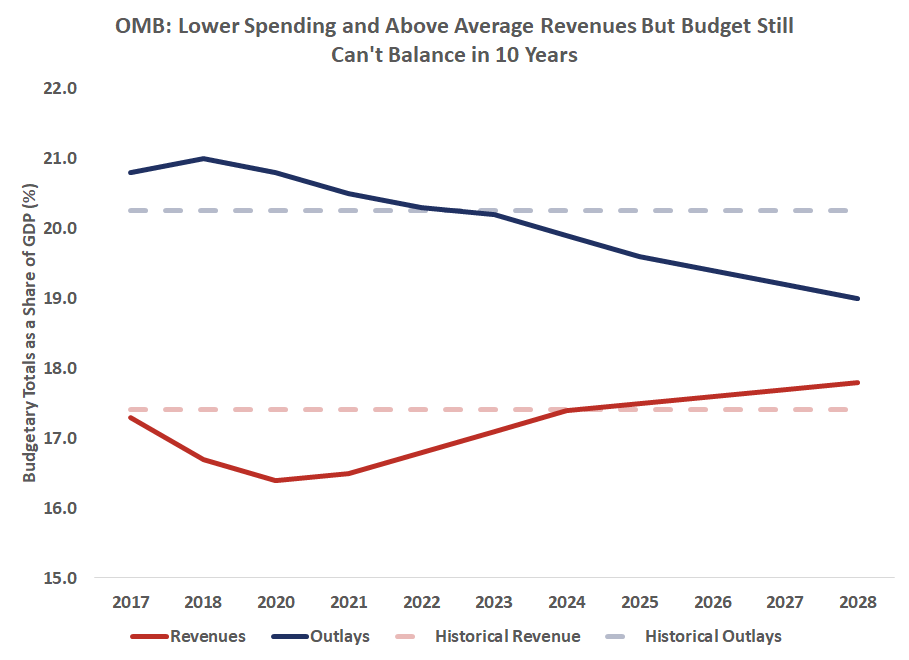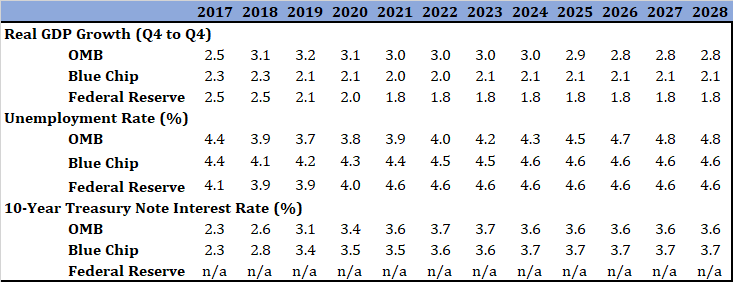Insight
February 12, 2018
Highlights of the President’s FY2019 Budget
By the Numbers
Taxes: The president’s budget makes essentially no changes in revenues relative to the administration’s baseline However, revenues are projected to increase as a share of gross domestic product (GDP). For context, the president’s budget assumes that revenues as a share of GDP dip well below the historical average (at levels that are typically seen during recessions) before trending upwards.
Spending: By the end of the 10-year budget window, the president’s budget would decrease spending by over $3.7 trillion, placing spending over 1.3 percentage points below historic norms.
Deficits: The president’s budget assumes projected deficits decline substantially, from 3.5 percent to 1.1 percent of GDP (based on the Office of Management and Budget’s own assumptions), through a combination of significant spending reductions, optimistic projections of economic growth, and savings on debt service.
Interest Payments: Interest payments on the debt will reach $761 billion in 2028. This reflects a more than tripling of $240 billion in debt service costs of $240 billion in FY2016, the year before President Trump assumed office.
Debt Held by the Public: Borrowing from the public would increase as a share of the economy under the president’s budget, reaching 81.9 percent of GDP in 2022, before dropping in 2028 to 72.6 percent of GDP– the same of level of debt outstanding at the end of FY2013.
Economic Projections
Compared to other economic forecasts, specifically the Blue Chip panel of forecasters and the Federal Reserve, the president’s budget includes much more optimistic economic projections in terms of economic growth and unemployment. These effects combine to increase tax revenues and reduce debt service. Indeed, persistently, higher growth of just 0.1 percentage points should lead to $273 billion in deficit reduction.












